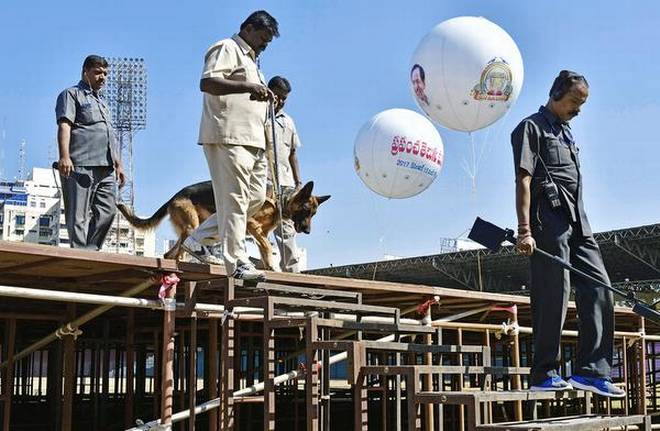
Daasarathi made his entry as well as mark as a 19-year-old in 1944
In a world before WiFi, the Telangana Saraswatha Parishath in Boggulkunta, was the first free open public space for prose, poetry and literature in Hyderabad.
“Telugu poet Sri Sri used to come and speak here. Other well known Telugu littérateurs used it to perfect their craft and share their stories. This has been a training ground for legions of Telugu teachers. More than that the Parishath has held aloft the torch of Telugu literature,” says J. Chennaiah, secretary of the TSP in Boggulkunta area.
As Hyderabad gets ready to host the World Telugu Conference between December 15 and 19, the shaded alcove in front of the L-shaped building is deserted but inside it thrums with classrooms where a new generation of Telugu teachers are being created.
Born as a rebel movement out of the grand Andhra Mahasabha on May 26, 1943 , it was first called Nizam Rashtra Andhra Saraswatha Parishath (NRASP).
The NRASP was born in the small library hall of Reddy Hostel building. Sankaranarayana Rao, Boorgula Ranganadha Rao and B. Krishna Rao, who were the founding members of the Parishad, set the tone and tenor of the movement. The choice of location was ironical as the Nizam’s King Kothi was just yards away.
“The word Nizam was used because the Parishath wanted to limit its activities to the Telugu-speaking areas of the Nizam’s dominion. The Nizam was wary of groupings. He suspected that the language groups would be used to subvert his rule. The NRASP’s sole goal was literary as many of the founders discovered that the Andhra Mahasabha was more interested in political activities,” informs Mr. Chennaih.
What the Parishad was against became apparent when the next meeting was organised inside the Warangal Fort on December 29 and December 30, 1944. But before the meeting could get underway, the whole tented arrangement was burnt in the night.
“The next day, Kaloji Narayana Rao, Devulapalli Ramanuja Rao decided to conduct the meeting as if nothing happened. The Police Commissioner Raja Bahadur Venkatarama Reddy was the chief guest. It was also the first meeting, where Daasarathi made his entry as well as a mark as a 19-year-old,” says Mr. Chennaiah.
The annual event did not take place in 1948 as the Nizam launched a crackdown and then there was the Police Action.
The 1949 meeting in Toopran in February saw the name of the organisation changed to Andhra Saraswatha Parishath (ASP) and it created groundwork for Telugu renaissance. “It was at that meeting that a demand was made for compulsory Telugu up to Matric which the government agreed to. All the students who were studying Telugu at the ASP got jobs as teachers,” informs Mr. Chennaih.
The effort to turn Osmania University into a Central University with Hindi as a principal medium of instruction was again thwarted as the ASP created Citizens’ Committee and lobbied against the move.
“It is on record that the then Education Minister Maulana Abul Kalam Azad shot down the idea of a Hindi University only after hearing out members of the ASP,” says Mr. Chenniah.
source: http://www.thehindu.com / The Hindu / Home> News> Cities> Hyderabad / by Serish Nanisetti / Hyderabad – December 12th, 2017